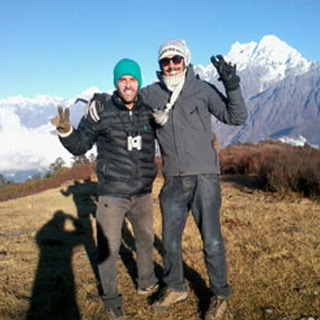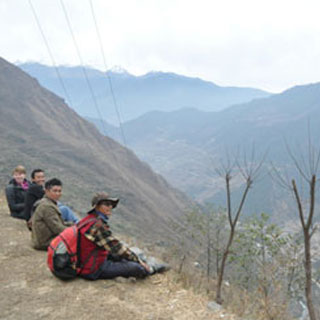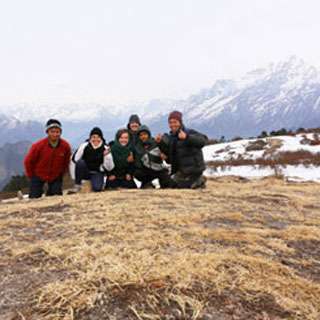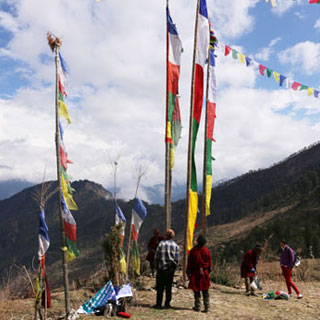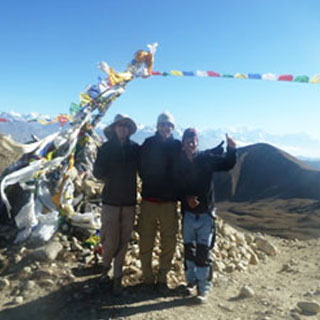Cultural Toures Bhutan
Trip Key Information
- Price:US$ 0
- Duration:12 Days
- Destination:Bhutan
- Grade:Easy
Destination: Bhutan
Transportation: Private Vehicle
Max. Altitude: 3120m
Destination: bhutan
Group size Min: 2 people.
Group size max: 12 people.
Show All DetailsThe Kingdom of Bhutan is a landlocked South Asian nation situated between India and China. The landscape ranges from the subtropical plains to the Himalayan heights, an elevation gain of more than 7000 m.
Bhutan is no ordinary place and one of the most isolated countries in the world. This is a country where buying cigarettes is illegal, where the rice is red and where chillies aren’t just a flavor but the entire dish. It’s also a deeply Buddhist land, where men wear a tunic to work, where giant protective penises are painted on the walls of most houses, and where Gross National Happiness is deemed more important than Gross National Product. Tourism in Bhutan is also unique. Visitors famously have to pay a minimum of US$200 per day, making it one of the world’s most expensive countries to visit, but this fee is all-inclusive. What you won’t find in Bhutan is backpacker-style independent travel.
Cradled in the folds of the Himalayas, Bhutan has relied on its geographic isolation to protect itself from outside cultural influences. In this way, Bhutan has successfully preserved many aspects of a culture which dates directly back to the mid-17th century. Bhutanese culture derives from ancient Tibetan culture. Dzongkha and Sharchop, the principal Bhutanese languages, are closely related to Tibetan, and Bhutanese monks read and write the ancient variant of the Tibetan language known as chhokey. Both Tibetans and Bhutanese revere the tantric guru Padmasambhava the founder of Himalayan Buddhism in the 8th century.
Its economy is based on subsistence agriculture (emphasizing corn and rice) and animal husbandry. Small, terraced farms predominate. Forestry, hydroelectricity, cash crops, tourism, and development aid (the latter mostly from India) are also significant. Population estimates range from 750,000, to 2.23 million. Thimphu is the capital and largest town.
If you do visit Bhutan, you will become one of the few who have experienced the charm and magic of one of the world’s most enigmatic countries – the ‘last Shangri La’. So why spend your money to come here? Because most of all, Bhutan offers an opportunity to peek at another way of living, an alternative vision of what is truly important in life.
The Himalayan Unforgettable Adventures organize recently open “Bhutan tours and trekking” any time all over the year except snowing season with our highly experienced guides and staffs according our Clients requirement and holiday schedule. But the best time is September, October, November and March, April, May. This is recommended only for highly qualified and adventurous people who love to test adventure travel in Bhutan Himalaya adopting real rural lifestyle
You will find our tours to Bhutan in the section TOURS. Alternatively feel free to contact us and we will draw up an itinerary together. As the documented Nepal visinears the end, the spotlight has been refocused on this beautiful Himalayan country as it continues to recover from April 2015's catastrophic earthquake. For many travelers, reaching Nepal's.!!
Nepal is a safe and welcoming country to visit, and tourism supports both the local economy and rebuilding efforts around the country.
Come and join us for a life changing experience – with Himalayan Unforgettable Adventure!!!
Day to day outline itinerary
- Day 01:Arrive Paro (Altitude 2,280m) by flight and transfer to Thimphu, approx. 1 hour & 15 minutes drive)
- Day 02:Paro sightseeing – Thimphu (Altitude 2320 m, 54 km)
- Day 03:Thimphu Sightseeing: (Altitude 2320 m)
- Day 04:Thimphu - Punakha: (Altitude 1310 m, Distance 76 km, Drive Time 3 hours)
- Day 05:Punakha – Gangtey (Altitude 3120 m)
- Day 06:Gangtey – Trongsa - Bumthang: (Altitude 2800 m, Distance 188 km, Drive Time 6 hour drives)
- Day 07:Bumthang Sightseeing: (Altitude 2800 m)
- Day 08:Excursion to Ura valley & back to Bumthang (Altitude 3100 m, Distance 51 km, Drive Time 1 hour drive)
- Day 09:Bumthang – Thimphu (212 km)
- Day 10:Thimphu: (Altitude 2320 m).
- Day 11:Thimphu – Paro: (Altitude 2280 m)
- Day 12:Departure
Cost Details
Cost Include
- All Meals [Breakfast /Lunch/Dinner]
- Accommodation [Twin Sharing] Single Room Supplement Extra US $: 40 per room per night.
- All transportation within the country including airport transfers.
- Royalty & Govt. Taxes
- Entrance fees for Museums and Monuments only
- Bhutan Visa Fees all hotel taxes/service charges.
- Airport tax
- Tourism Development fund
- English speaking tour guide throughout the tour.
- All local Sightseeing as mentioned in itinerary
- All internal route permit
Cost Exclude
- Travel Insurance
- Airfares
- Beverages
- Airport taxes
- Expenses of personal nature
- Excess baggage
- Tips to guides and drivers
Useful Info
Cost of Bhutan Tours Package
What is the cost of Bhutan Tours Package?
The Himalayan Unforgettable Adventures organize recently open “Bhutan tours and trekking” any time all over the year except snowing season with our highly experienced guides and staffs according our Clients requirement and holiday schedule. But the best time is September, October, November and March, April, May. This is recommended only for highly qualified and adventurous people who love to test adventure travel in Bhutan Himalaya adopting real rural lifestyle. The standard tourist tariff imposed by the Royal Government of Bhutan is US$250 per person per night with effect from January 2012, without any surcharge as was there before. However considering the fluctuation of currency rate, Single Individual traveler may be charged some small amount if necessary. One time Visa fee and Tourism Development Fee remained same.
FIT
Single Individual: US $ 250 per night per person
Groups of 2 persons: US $ 250 per night per person
Visa Fee US $ 40 per person
Tourism Development Fee US $ 10 per person
Come and join us for a life changing experience – with Himalayan Unforgettable Adventures!
Note
Detail Itinerary
Day 01Arrive Paro (Altitude 2,280m) by flight and transfer to Thimphu, approx. 1 hour & 15 minutes drive)The flight to Paro is one of the most spectacular in entire Himalayas. Whether flying along the Himalayan range from Kathmandu or over the foothills from Kolkatta, the journey offers fascinating views and an exciting descent into the Kingdom. Bhutan’s first gift, as you disembark from the aircraft will be cool, clean fresh mountain air. Thimphu Paro TourAfter immigration formalities and baggage collection, you will be met by our representative, and afterwards drive to Thimphu, the capital town of Bhutan with en-route stop at Chuzom, the confluence of Thimphu and Paro rivers. Three different style of stupas ; Tibetan, Nepalese and Bhutanese adorn this confluence. Shortly before reaching Chuzom, you will see on your left Tschogang Lhakhang, ‘the temple of the excellent horse’. It is a private temple, built in 15th century, as the result of visitation from Balaha, the excellent horse, a manifestation of Chenrezig, the compassionate Buddha. On arrival, in Thimphu check-into the hotel. The capital town of Bhutan and the centre of Government, religion and commerce, Thimphu is a unique city with unusual mixture of modern development alongside ancient traditions. With the population of about 1,00,000 it is perhaps still the world’s only capital city without a traffic light. Later visit to Trashichhoedzong. This impressive fortress/monastery houses Secretariat building, the throne room of His Majesty, the King and various government offices. It is also the summer residence of Chief Abbot and central monk body. Evening an exploratory walk around Thimphu city centre. Also visit the Local Crafts Bazaar, to browse through example of Bhutan's fine traditional arts. Here you can buy hand-woven textiles, thangkha paintings, masks, ceramics, slate and wood carvings, jewellery, interesting items made from local materials. Overnight at the hotel in Thimphu. (Altitude 2320m) One of our representatives will receive you at the airport and take you to the hotel. After lunch, visit the ruins of Drukgyal Dzong. It is 16 km northward from Paro proper. The dzong was built in 1647 by Zhabdrung Ngawang Namgyel, the father and unifier of medieval Bhutan. The dzong was destroyed by fire and left in ruins. It was built to commemorate victories over Tibetan invasions. On a clear day, you can see magnificent Mt. Jhomolhari (7,314m). On the way back, visit Kichu Lhakhang. It was built in 659 A.D by the Tibetan King Songtsen Gempo. Kichu Lhakhang is one of the 108 monasteries the Tibetan king built across the Himalayan region to subdue the demons.The rest are found in other neighboring countries. Dinner and overnight in Hotel.
Day 02Paro sightseeing – Thimphu (Altitude 2320 m, 54 km)A special day with an excursion to the spectacular Taktsang (Tiger’s Nest) monastery. After breakfast, a short drive takes us to Satsam Choeten, from there a 2- hour walk till the viewpoint of the monastery. The trail climbs through a beautiful pine forest, many of the trees festooned with Spanish moss and an occasional grove of fluttering prayer flags. We stop to rest and for light refreshments at the Taktsang Jakhang (cafeteria) and then walk a short distance until we see the clear view of Taktsang monastery. The main Lhakhang at the monastery was built around Guru Rimpoche’s meditation cave in 1684 by Gyaltse Tenzin Rabgye. This incredible monastery clings to the edge of a sheer rock cliff that plunges 900 meters into the valley below. Legend has it that Guru Padmasambhava, the tantric mystic who brought Buddhism to Bhutan, flew here on the back of a flying tigress said to be his favorite consort. After lunch, visit Ta Dzong (built in1656 and renovated in 1968), an ancient watchtower, which now houses the National Museum. Below the museum is Paro Rimpung Dzong (literally meaning “Heap of Jewels,”) built in 1646 by Zhabdrung Ngawang Namgyel. A short walk takes you to the base of the dzong across a traditional cantilever bridge. Little farther, there is one of the innumerable archery grounds. Archery is the national game of Bhutan. If we are lucky, we may catch a match in action. The evening ends with a walk through Paro’s main shopping center. Then, drive to Thimphu. Overnight in Hotel.
Day 03Thimphu Sightseeing: (Altitude 2320 m)The day begins with a visit to the National Memorial Choeten (built in 1974 in honor of the late third King Jigme Dorji Wangchuk) and the Dupthop Lhakhang, a nunnery. We then visit the National Library stocked with ancient Buddhist scriptures and the Institute of Zorig Chusum. It is here where the tradition of Bhutan’s 13 arts and crafts are kept alive. After lunch, we drive to the National Institute of Traditional Medicine where medicines are prepared according to ancient practices and to Lungtenzampa to see the Royal silver smiths at work and Bhutanese paper factory. Other highlights include a visit to Tashichho Dzong. The dzong houses the office of His Majesty the king and is the seat of the national government and the Central Monastic Body. The dzong also serves as the summer residence of the Je Khenpo (Chief Abbot of Bhutan). Finally, visit the Handicrafts Emporium followed by shopping for souvenirs in the capital city. Over night in Hotel.
Day 04Thimphu - Punakha: (Altitude 1310 m, Distance 76 km, Drive Time 3 hours)After breakfast, drive to Punakha via Dochula Pass. If the weather is clear, we stop for a while to get a glimpse of the towering Himalayas. In Punakha, visit the Punakha Dzong built in 1637 by Zhabdrung Ngawang Namgyel. It is situated at the confluence of Pho Chu (Male River) and Mo Chu (Female River). The place was once the capital of Bhutan. The construction of the Dzong is believed to have been foretold by Guru Rinpoche. The small dzong called Dzongchung that exists even today housed a statue of Buddha. It is said that Zhabdrung ordered the architect, Zowe Palep, to sleep in front of the statue. While Palep was sleeping, the Zhabdrung took him in his dreams to Zangtopelri (Paradise) and showed him the palace of Guru Rimpoche. From his vision, the architect conceived the design for the new Dzong. The design was never put on paper. The Dzong was named Druk Pungthang Dechen Phodrang (Palace of Great Happiness). The war materials captured during the battle with Tibetans are preserved here. Punakha is still the winter residence of Je Khenpo. The third king, Jigme Dorji Wangchuck, convened the first National Assembly in Punakha in 1952. In the evening, visit Khamsung Yulley Namgyal Choling Monastery. Overnight in Hotel.
Day 05Punakha – Gangtey (Altitude 3120 m)After breakfast, we leave for Trongsa via Gangtey. On the way, we will see Wangduephodrang Dzong. The dzong was built in 1638. Legend has it that as people were searching for the site of the Dzong, four ravens were seen flying away in four directions. This was considered an auspicious sign representing the spread of Buddhism in the four points of the compass. The Dzong is situated at the confluence of Mo Chu and Dang Chu rivers. Drive farther to Gangtey. visit Gangtey Gompa. Gyaltse Pema Thinley, the grandson and mind reincarnation of Pema Lingpa founded the temple in 1613. And Tenzin Legpai Dhendup, the second reincarnation, built the temple. The present abbot, Kunzang Pema Namgyal, is the ninth re-incarnation. Gantey Gonpa is a Nyingma monastery and is affiliated to other Nyingma monasteries including Tamshing in Bumthang. Explore the Phobjikha valley. It is the winter roosting place for the rare Black-necked cranes. Dinner and overnight at Guest House.
Day 06Gangtey – Trongsa - Bumthang: (Altitude 2800 m, Distance 188 km, Drive Time 6 hour drives)After breakfast, leave for Bumthang. En route visit Trongsa Dzong, one of the most impressive dzongs in Bhutan. It was built in 1644 by Chogyal Minjur Tempa, who was sent by Zhabdrung to unify the eastern Bhutan, and was enlarged at the end of the 17th century by Desi Tenzin Rabgye. Trongsa Dzong is the ancestral home of the present Royal Family. The first two hereditary kings ruled Bhutan from this Dzong. After lunch, visit Ta Dzong, an ancient watch tower. Recently, it was turned into the Monarchy Museum. The chapel inside the Ta Dzong is dedicated to Trongsa Penlop Jigme Namgyal. Drive to Bumthang. Dinner and overnight in Hotel.
Day 07Bumthang Sightseeing: (Altitude 2800 m)After breakfast, visit Jakar Dzong which literally means “The Castle of White Bird”. The dzong was built in 1667. Visit Jampa Lhakhang. It is said to have been built by King Srongtsen Gempo of Tibet in 659 A.D on the same day of Kichu Lhakhang in Paro. The temple was visited by Guru Rimpoche during his visit to Bumthang. Underneath the temple, it is believed there is a lake in which Guru Rinpoche hid several terma (religious treasure or relic). One of the most special and spectacular festivals called called Jampa Lhakhang Drup is held in every October. It is here where naked dance is performed to ward off evil spirits. After lunch, visit Tamshing Lhakhang (temple of good message). It was established in 1501 by Terton Pema Lingpa and is one of the most important Nyingmapa temples in the country. In the evening, visit Mebartsho. Literally, it means “The Burning Lake”. The lake is located en route Tang valley. Here, Terton Pema Lingpa displayed his supernatural power by diving into the lake with a butter lamp and came out with the lamp still lit and a treasure. And it is believed that Pema Lingpa discovered several religious treasures hidden by Guru Rinpoche from the lake. Overnight in Hotel
Day 08Excursion to Ura valley & back to Bumthang (Altitude 3100 m, Distance 51 km, Drive Time 1 hour drive)After breakfast, excursion to the beautiful valley of Ura. Visit Ura village. It is a typical cluster of houses. And visit Ura Temple. Dinner and overnight in Hotel
Day 09Bumthang – Thimphu (212 km)After an early breakfast, drive to Thimphu. Overnight in Hotel
Day 10Thimphu: (Altitude 2320 m).After breakfast, excursion to Cheri Monastery. After lunch, visit mini zoo. Here you can see takin, the national animal. Just above the zoo, from a hill top called Sangaygang, you can see an exquisite view of the capital city sprawling on the narrow wang valley. And have a glimpse of the tallest Buddha statue in Bhutan.
Overnight in Hotel
Day 11Thimphu – Paro: (Altitude 2280 m)After breakfast, drive to Paro and hike to Drakarpo. Picnic lunch will be served. In the evening, visit a farm house. Over night in Hotel.
Day 12Departure Early in the morning, drive to the airport for departure.
Option)
Arrive at Tribubhuwan International Airport in Kathmandu
Welcome you to Nepal and transfer to the hotel, welcome dinner in the evening.Overnight at hotel
Quick Inquiry
Traveler’s Says
We did the Langtang Valley Trek with Nyima Chhomo (the daughter of Durga Tamang) and were really happy with everything. We enjoyed having a female guide which is really uncommon in trekking in Nepal. The trek was stunning and well organized.… [More]
Hannah Kraft and Solveig Leas, GermanyDear Durga, The three of us are very well and have enjoyed this week a lot! I really liked how authentic it was. We shared some nice moments with the home owners, like seeing a freshly slaughtered hen getting prepared for… [More]
Guillaume Billardon, SwazilandMy husband & I booked a private trek
combining the Tamang Heritage & Langtang trails. Our guide, Nyima Chhomo, and porter, Dobar, were wonderful hosts throughout our 13 day adventure. Their local knowledge was evident and we were glad to have… [More]
Andrea ODonnell & Tim ODonnell, United StatesExcellent experience - Tamang Heritage Trek We took the Tamang Heritage trek September 2024 and it was a wonderful experience. The trip was organized as promised and the guide, Pasang, was exceptional. Pasang is from the local villages so knew many… [More]
Shareen Leland and Marian, United StatesBonjour Durga Tamang, Tout s’est bien passé à Katmandou, nous avons pu prendre le temps de visiter la ville tranquillement. Nous sommes rentrés un peu fatigués du trek mais nous sommes contents, c’était vraiment une bonne expérience et nous sommes ravis… [More]
Hélène Theodori et sa famille, Trekking, FranceDear Durga-- I hope this note finds you and your lovely family well. Happy New Year! Thank you very much for your good wishes a few weeks back. We all had covid in my family, and we are only just getting… [More]
Jennifer, AustraliaHello, Durga my friend. The trek was an amazing experience and despite having to shorten the trip we both are grateful for the experience. Both Krisna and Nyima were a big part of the reason that we had a great experience.… [More]
David William Merrifield, United StatesNamaste Tamang, I think Pasang is a really good guide, just a must take more attention for the most powerless person in a group. The guide has the responsibility for the tourist, and must be so slow during Trekking like the last… [More]
Ayu Mielke, GermanyOrginally I wanted to do some trekking but having only 14 days, I wanted to see Temples and World Heritage locations too, like where Buddha was born, so with Durga's help decided to do the 10 day "Exploring Hertiage side" and… [More]
Gary Michael Clark, United StatesCannot recommend enough! Durga is extremely friendly and went above and beyond to make our trip welcoming and smooth (not just on the trek- before and after as well)
Samdu (our guide) was extremely friendly and helpful, couldn't have done… [More]
The best thing you'll ever do! The trek was unbelievable, Durga was extremely welcoming, friendly and helpful. Making the whole thing so smooth. Samdu our guide was perfect, couldn't have been more helpful. Hassan our porter was amazing, I don't know… [More]
MR DANIEL HORROCKS, United KingdomGreat experience at Langtang Valley. Durga the owner took care of meeting all my requests and tailor-made the experience according to my needs. My guide was enthusiastic and nice. Highly recommended.
[More] Esteban Camargo, ColombiaTamang Heritage Trail, Langtang Valley Trek
Nach der Empfehlung im Stefan Loose Reiseführer hatten wir uns bereits zuhause bei der Vorbereitung unserer Reise mit Durga Tamang in Verbindung gesetzt. Das persönliche Gespräch in Kathmandu hat uns dann voll bestätigt, mit Himalayan… [More]
Heinz und Elisabeth, GermanyIt was my first visit to Nepal and I was anxious about my ability to manage the trek. I am 58 and keep active and fit but I am not used to the heights of the Himalayas. Thanks to Durga's care… [More]
Katherine Westfold, AustraliaChoosing Himalayan Unforgettable Adventure and Durga Tamang as our (local!) travel company and trekking guide was definitly the best decision for our Nepal trip. Not only that the trekking was organized in a thoughtful way! Durga showed us through spectacular landscapes… [More]
Leonhard Jungwirth, AustriaI came to Kathmandu with the idea in mind to do some trekking, but without having anything planned. When I first arrived there I got in touch with some agencies in Thamel but I didn't trust them much because they seemed… [More]
Allen, ItalyChoosing to have Durga guide my trekking partner and I was one of the best decisions Ive ever made. We trekked Langtang valley at the end of monsoon season and truly experienced the culture of the Nepali and Tibetan. Plus, you… [More]
Noah Willison, United States"Langtang valley Trek"
Mar 28th 2016 Namaste: We really enjoyed out trip to Langtang with you Durga Tamang. Everything was planned perfectly and we were thrilled to get the whole family onto the top of Kyanjin Ri. Langtang is safe now.
… [More]
"Tamang Heritage Trek"
May 17 2016 Namaste: Overall our experience in Nepal with you was really amazing, the days we spend in the Tamang Valley, walking around that beautiful views of mountain peaks, forests and little villages were the best part of… [More]
Oriol Fonos, SpainDonna and I had a great experience on our trek of the Annapurna circuit. The scenery, the trail, mountain villages, and the Nepalese people were exceptional as we expected.
Himalayan Unforgettable Adventure provided the transportation, guide, porters, meals and accommodation for… [More]
Bill and Donna Bauer, CanadaWhen we began planning our trip to Nepal in 2015 we began to quickly realise just how many decisions we were going to need to take to put together our itinerary, not least being the extensive options available to you when… [More]
Simon and Caroline, British Indian Ocean TerritoryIn October 2015, my husband and I went trekking in Nepal with our friends Bill and Donna. We were a private group and originally our plan was to hike the Langtang valley. We decided to book our trek through Durga Tamang who runs Himalayan… [More]
Anne and Harry Range, CanadaI just finished the Langtang Valley trek with Durga Tamang as my guide and Nima Lama as my smiling hard-working porter. Unfortunately, the weather was uncooperative – constant clouds, drizzle, mist – making mountain views elusive. (But even with that, I… [More]
Mike, United StatesDear Durga ,I want to say thank you so much for the outstanding trip up to the top of kala pather! We had sucha great time with you and Ram. You are an excellent guide and a wonderful person. We felt… [More]
Joe Michael and Kim, ItalyLe treck etait super! Nous sommes passes de village en village, les paysages sont magnifiques. Nous avons vu les differents métiers, des tisseuses, des bergers, des gens dans les cultures, le travail se fait a l’ancienne, c’ est tres interessant. Le… [More]
Jeanne, Jenny and Sarah, LuxembourgFebruary 10 2014 Namaste: We have very much appreciated an approach combining volunteering for RTEES during one week in the small Tamang village of Gatlang, and a 10 days trek in the Langtang valley, organized by Himalayan Unforgettable Adventure.
This… [More]
Isabelle and Alexis, FranceNamaste. We wanted to organise our trek before we arrived in Kathmandu, and after some extensive research came across Durga Tamang and his organisation (that are doing wonderful things for the villages of the Tamang Heritage Trail). Durga was very responsive… [More]
Nelly and Nathan, AustraliaNamaste. We wanted to organise our trek before we arrived in Kathmandu, and after some extensive research came across Durga Tamang and his organisation (that are doing wonderful things for the villages of the Tamang Heritage Trail). Durga was very responsive… [More]
Nelly and Nathan, AustraliaNamaste. We wanted to organise our trek before we arrived in Kathmandu, and after some extensive research came across Durga Tamang and his organisation (that are doing wonderful things for the villages of the Tamang Heritage Trail). Durga was very responsive… [More]
Nelly and Nathan, AustraliaWe contact Durga to make the Heritage Trail and Langtang Trail (1 march to 13 march 2014) and he offer us to go before starting the trek two days at his village, Gatlang, to see the LOSAR FESTIVAL (feb- march Buddhist… [More]
Margarida and Jorge, SpainThis was undoubtedly a unique, an unforgettable experience that I waited for years to fulfill. Thank you so much for turning it real and for showing me the simplicity and greatness of the Himalayan Tamangs and their own kingdom.
Making your… [More]
Miguel Buto, Portugal6 January 2014 Namaste. We wanted to organise our trek before we arrived in Kathmandu, and after some extensive research came across Durga Tamang and his organisation (that are doing wonderful things for the villages of the Tamang Heritage Trail). Durga… [More]
Nelly and Nathan, AustraliaThe highlight of our trip to Nepal was our amazing two week trek along the Tamang Heritage and Langtang trails. The scenery and moutain views in this area are absoutely gorgeous, something we will remember for years to come. The trip… [More]
Margit McLaughlin, United StatesWe contact Durga to make the Heritage Trail and Langtang Trail (1 march to 13 march 2014) and he offer us to go before starting the trek two days at his village, Gatlang, to see the LOSAR FESTIVAL (feb- march Buddhist… [More]
MARGARITA AND JORGE, SpainFebruary 10 2014 Namaste: We have very much appreciated an approach combining volunteering for RTEES during one week in the small Tamang village of Gatlang, and a 10 days trek in the Langtang valley, organized by Himalayan Unforgettable Adventure.
This approach… [More]
Isabelle and Alexis, FranceNamaste: We did the Heritage Trail and Langtang Valley Trail with Durga and his team and was a wondurful experience. That mountains are so beautiful and the village people are very friendly and kind. I really recommend do that trails with… [More]
Margarida and Jorge, FranceDate: 22 Oct 2013 Our Upper Mustang trek was an amazing experience both in terms of the unusual physical beauty and the ever-present stream of spirituality, especially in the extraordinary medieval city of Lo Manthang. Durga Tamang, our trekking guide, made… [More]
Mylo Schaaf and Dan Lowenstein, United StatesDurga is a really nice men. when we first met him we already had some bad experiences with tour guides in Kathmandu who tried to sell very hard there trekking trips. but durga wasn't like those man. he made directly a… [More]
Antilia and Luc, FranceTravelling alone, and with the idea of going trekking, I started to inform myself, which trail I should choose. I read about different treks and choose the Heritage Trail, because it is a relatively new trek, easy to walk and everyone… [More]
Michael, United StatesDurga is a really nice men. when we first met him we already had some bad experiences with tour guides in Kathmandu who tried to sell very hard there trekking trips. but durga wasn't like those man. he made directly a… [More]
Alex , Jana and Adrian, Germany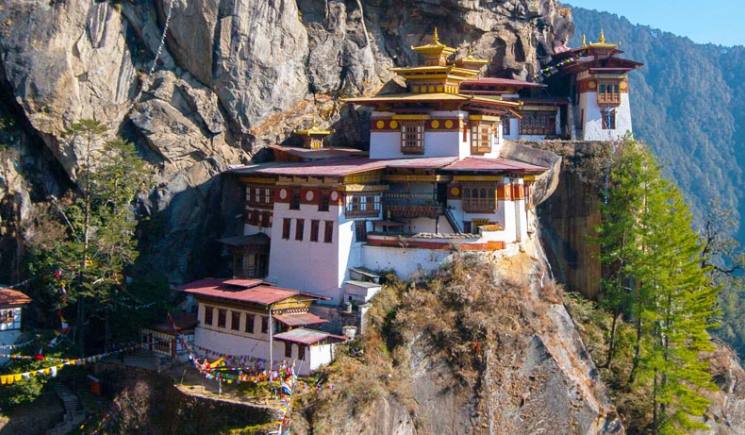
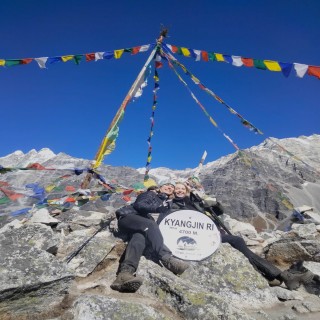
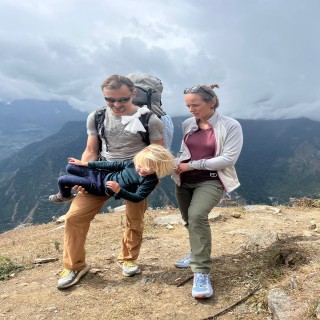
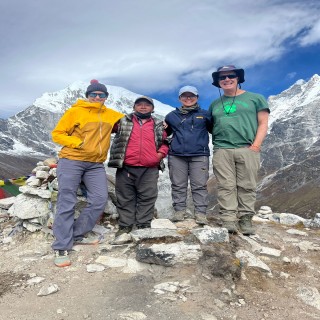
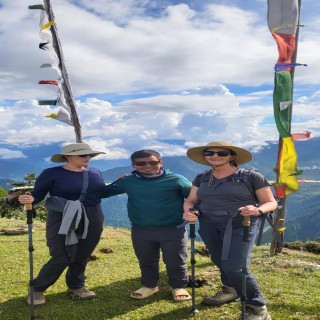
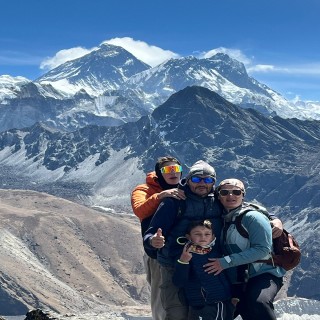
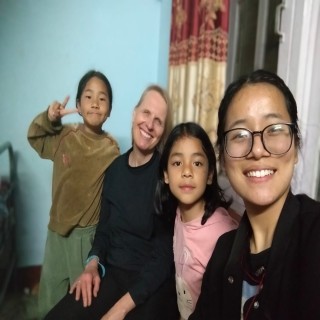
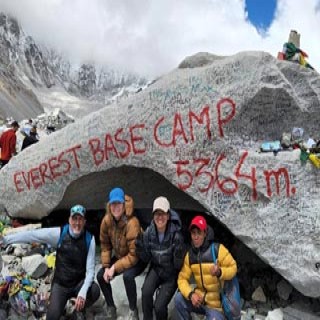
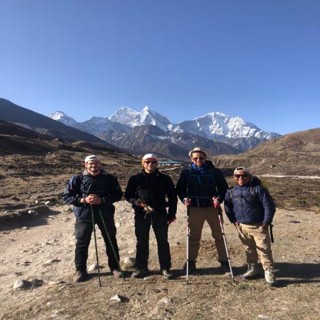
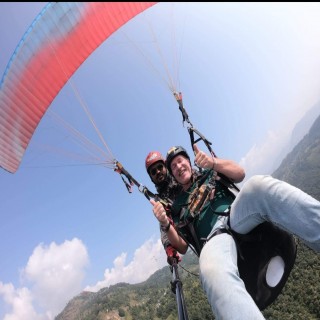
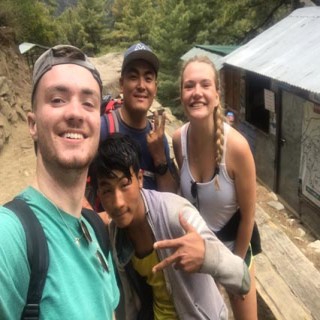

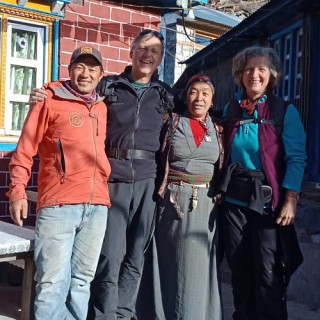
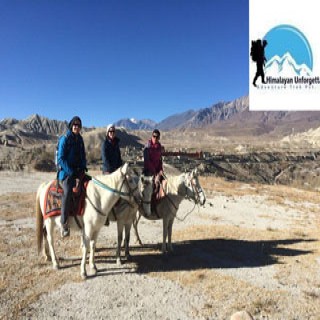
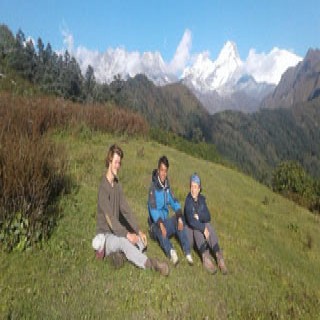
.jpg)
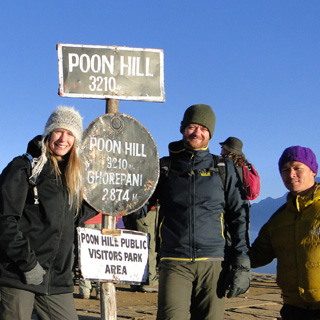
.jpg)



.jpg)

